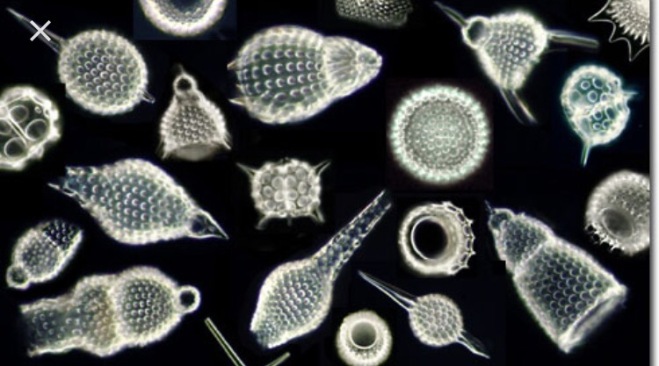Forams (Foraminifera) – single celled organisms that make a calcite shell; scientists can extract chemicals from their shells that can tell us when the animal lived as well as what its environment was like (~500mya). Forams have been around for millions of years, and there are many kinds of species. We can also figure out what species of Forams are in the sediment to figure out how old the sediment is.
How can we use forams to learn about Earth’s climate?
 ————————————————————————–
————————————————————————–
Pteropods

Coccoliths
Radiolaria – single celled organisms that make a shell of silica; by comparing living species to the fossil record, scientists can tell what past environments were like (~600mya) what does it mean if there are lots of radiolaria in your sample? https://micro.magnet.fsu.edu/micro/gallery/radiolarians/radiolarians.html
https://micro.magnet.fsu.edu/micro/gallery/radiolarians/radiolarians.html
Diatoms – a type of algae that make a shell of silica; by comparing living species to the fossil record, scientists can tell what past environments were like (~200mya) what does it mean if there are lots of diatoms in your sample? http://www.daviddarling.info/encyclopedia/D/diatom.html
http://www.daviddarling.info/encyclopedia/D/diatom.html
Sponge spicules – the structural framework (skeleton) of sea sponges; they are typically made of silica and mesh together to give the sponge support.
Echinoid spines- the spines of Echinoids, such as sea urchins


[…] Common Types of Microfossils […]
LikeLike
[…] Common Types of Microfossils […]
LikeLike
[…] Common Types of Microfossils […]
LikeLike
[…] Common Types of Microfossils […]
LikeLike
[…] Common Types of Microfossils […]
LikeLike
[…] Common Types of Microfossils […]
LikeLike
[…] Common Types of Microfossils […]
LikeLike